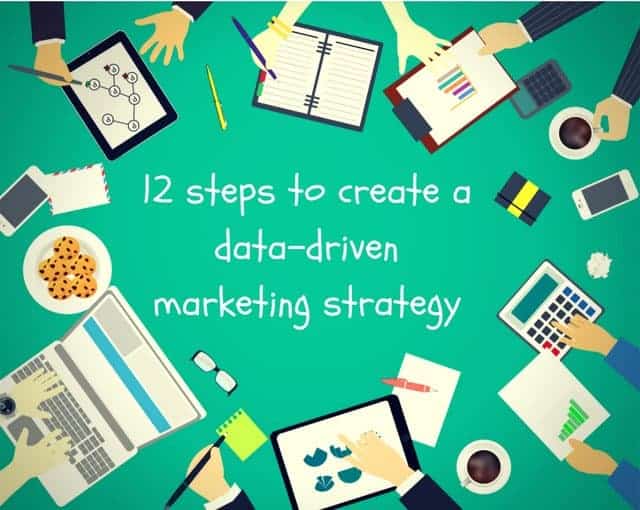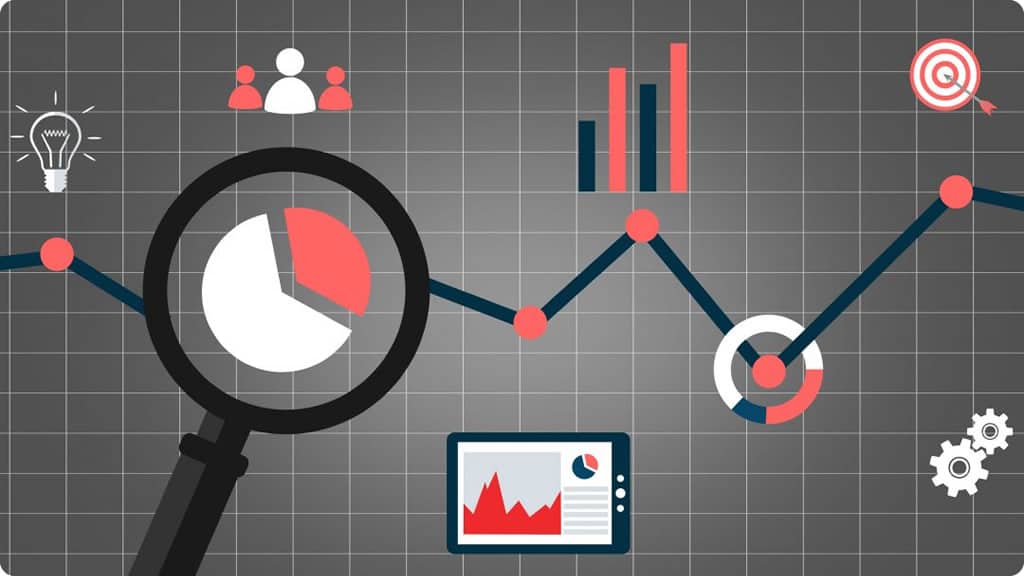Guesstimate time is over. Marketers today understand that decisions can’t be based only on instinct. Marketing is not only an art; it is a combination of art and science – creativity and data. Still, the relationship between the two is complex.
In recent years, the data part has become more crucial in the marketing decision process. There are many junctions in marketing, and one of the hardest challenges for the marketing manager has always been the marketing plan/strategy creation.
The problem is that while lots of marketing processes have evolved from a data perspective, the marketing planning process has remained the same. In this post, I’ll try (and hopefully succeed) to give you an intro to how you can create a marketing plan/strategy while using a data-driven mindset.

12 steps to create a data-driven marketing strategy
1. Ensure you have the right team (and the right mindset)
To make the right data-based decisions, your marketing team must include marketers who understand data science concepts and who are willing to learn and implement concepts of analytics, measurements, and predictive models.
The same goes for the other side. If your company is large enough and has a dedicated data science team, make sure it has the right marketing mindset. If it doesn’t, make sure your R&D team does, and not just in buzzwords – teach them. Make sure they dedicate time to learning and understanding marketing concepts in general and your metrics, channels, and goals in particular.
2. Understand your options and choose the right data
There are tons of data out there. Hey, there are probably lots of data even inside your company. First, you must understand your options. Which data are available internally to use and which external data resources are available and relevant to your company’s case? As in most parts, focus is a key player. You must identify the relevant sources to track and manage.
3. Integrate your data
Like any big data analysis challenge with a variance in and volume of data points, effective data-driven marketing requires that data be held in one place. Data from multiple sources must be integrated and made accessible. From your mailing lists, sales records, web/customer behavior analytics, social media, and any other source of information, everything must be integrated so you can use all of it in the best way.
4. Understand the numbers – use a story
Numbers are just numbers until you attach the right meaning to them and pull out insights. That’s why you need to find and extract the relevant trends, those that, when you combine them, tell a story or enlighten with a remarkable insight. “Tangibility is key to making people care about, and want to use, data.” (Erik Bitmanis)

5. Define your business goals and extract your KPIs. Then, measure them.
You should always know your KPIs (Key Performance Indicators). Always. Otherwise, you’re just wasting time and money investing and not knowing whether you’ll succeed or fail. Obviously, you know that you want to measure and maximize ROI, but that’s not enough. You must know what return you want, what it looks like and how to evaluate yourself.
Before you can set and track your KPIs, you must define your business goals for marketing. A company that would like to maximize its brand awareness will evaluate itself differently from one that would like to maximize its lead generation, one that wants to maximize its short-term number of sales or one that simply wants to recruit more employees.
From your marketing goals, you can extract the right matrices to measure your whole marketing strategy and then understand which one to track and measure for each campaign.
Be sure that you know what you’re measuring. If you measure MQL, be sure about the definition of MQL in your company. Align definitions for everyone on your team and for anyone in the company who will be involved with the data. Now that you know what to measure, measure it. Constantly. Seriously, do it.
6. Know your target audience and match the relevant data to the relevant persona
This goes both ways. Use your data to understand your audience and build your data around your audience. From your data, you can find out who are the ‘high performers’ – those who are the most valuable to you. Data will help you identify them so that you can profile them, target them and know which sources led them to you. That will give you some information about the quality of your marketing channels.
When you know the patterns for the ‘right’ customers, you can create your buyer personas. Target customers who will end up with a high LTV, but not only. For instance, you want to target the profiles of customers who will interact and engage with your content and those who will end up being advocates and ambassadors for your company, bringing in others.
Do it by reverse engineering your funnel. Figure out who they are from your current metrics, characterize them, find where they came from initially and use this data.
Bonus Tip: Use this data not only when creating your strategy but also to customize your content and campaigns for the right audience. Trust me, it will do wonders.
7. Use your competitors’ data as intelligence
A good place to start understanding your options is your competitors and, in general, your landscape. It is important that you figure out where your competitors are investing their resources so you can start developing your strategy with a competitive advantage.
The key here is to find a balance between the channels your competitors are using and that you should be using too, because of their relevance, and those that none (or at least almost none) of your competitors are using so that you can break through them and establish dominance and uniqueness there.
8. Understand the coming marketing trends
A common rule in marketing is that those who figure out which new marketing channel will be a winner, who understand that channel and who act accordingly (i.e., invest in this channel correctly) will be the winners. The main principle is easy. Ride on the channel’s trends. Invest in the right ones when they are small, and when they get big, you’ll earn from the trend relatively.
Some channels demand high $ investments. In many cases, the investment is for the long run. That’s why it’s important to analyze where the market goes and to understand the channel’s relevance for your company and its place in your marketing arsenal in the long run.
9. Use the right tools
As in almost any domain in Martech, many tools are available to enable you, as a marketer, to make better decisions using a data-driven mindset. These tools include classic Google analytics for your website analysis, Mixpanel to look into what users are doing on your web and mobile properties, Buzzsumo for analyzing what content performs best for any topic / competitor, Infer for predictive lead scoring, Optimizely for A/B testing, InfiniGrow for dynamic marketing planning (disclaimer: that’s us 😉 ) and many more.
Obviously, these are just a few examples of companies that provide amazing tools for marketers to better understand their data and make better data-informed decisions. The industry is crowded with great tools and solutions, so focus on those that best suit your company and its current missions.
10. Add some creativity
Data is good. It is even amazing. But when creating your marketing plan, you must add some creativity to the data. Understanding the ROI of your marketing activities done until today will reveal to you only some of the equation. To complete it, always add assumptions of your own (assuming you have marketing knowledge to use).

11. Predict and plan
So you’ve collected all the assumptions and analyzed different channels and data points. Tools were chosen and understood, goals and metrics are aligned and clear, and everyone in your team is synced. Are you ready to go?
One last thing before deciding on your strategy and plan is to predict the future. No, not in the way you probably think. You must set expectations for your strategy so that you’ll know to evaluate your execution, and probably so you can present it to your CFO / CEO, ensuring that they know what their investments are used for. Now you are good to go.
12. Optimize
Change your mindset. Marketing planning is not a static one-time action. As the business environment becomes agile, so does the marketing environment. The creation of your marketing strategy is the first step.
Always try to test and optimize your plan. Same as A/B testing your campaigns, you must A/B test your high-level strategy, the channels you choose to invest and the assumptions you initially had.
Analyze which channels are working better than you previously thought and which are not doing well. Look for new channels to improve your mix. Never stay in place.
Hungry for new ideas on improving your marketing strategies? Keep your eyes open and follow our blog for further tips and insights.

